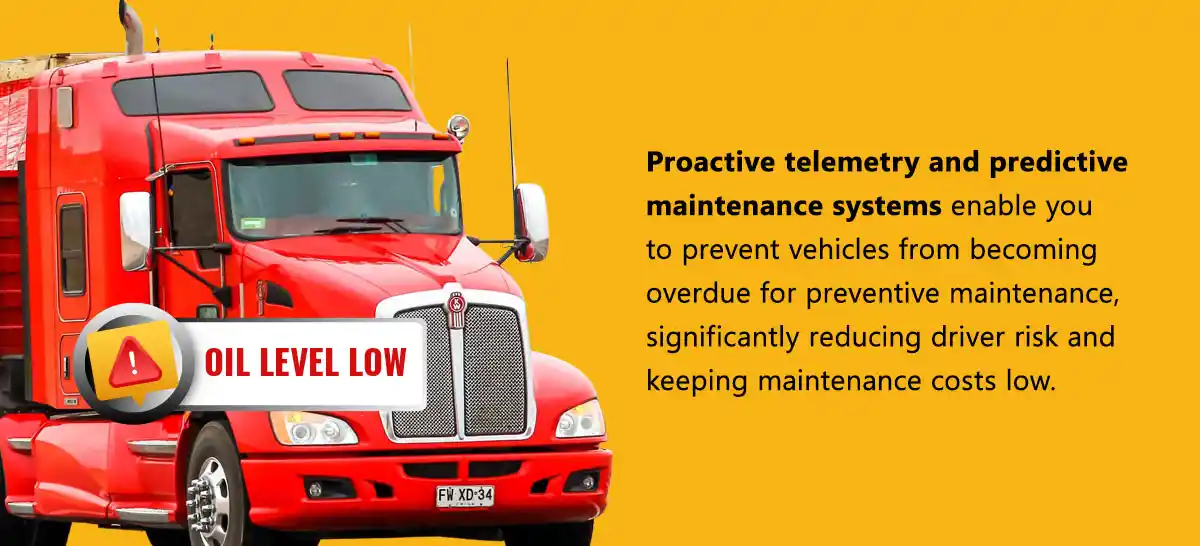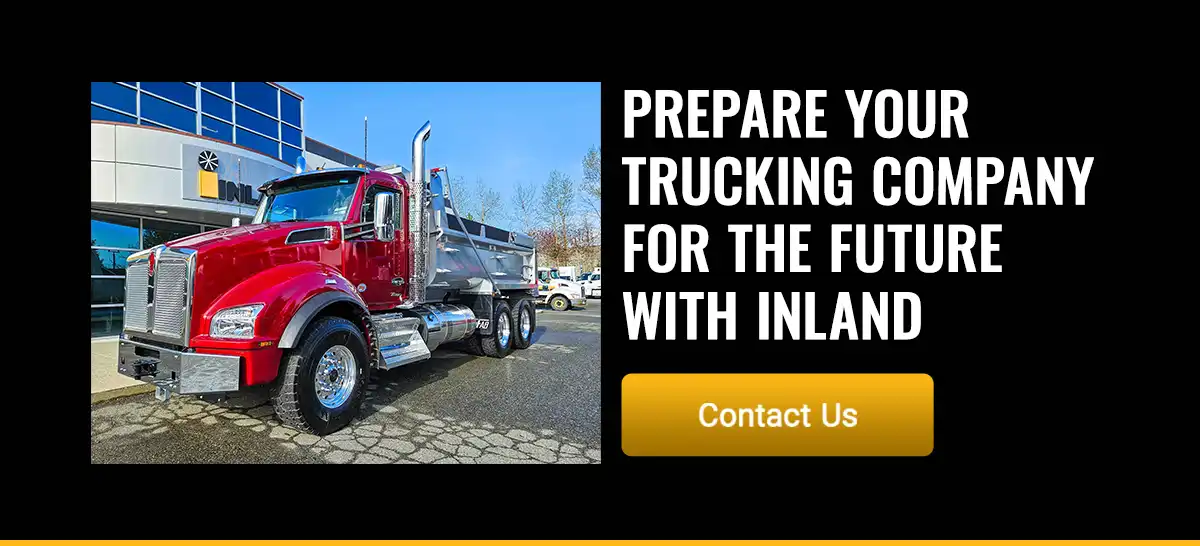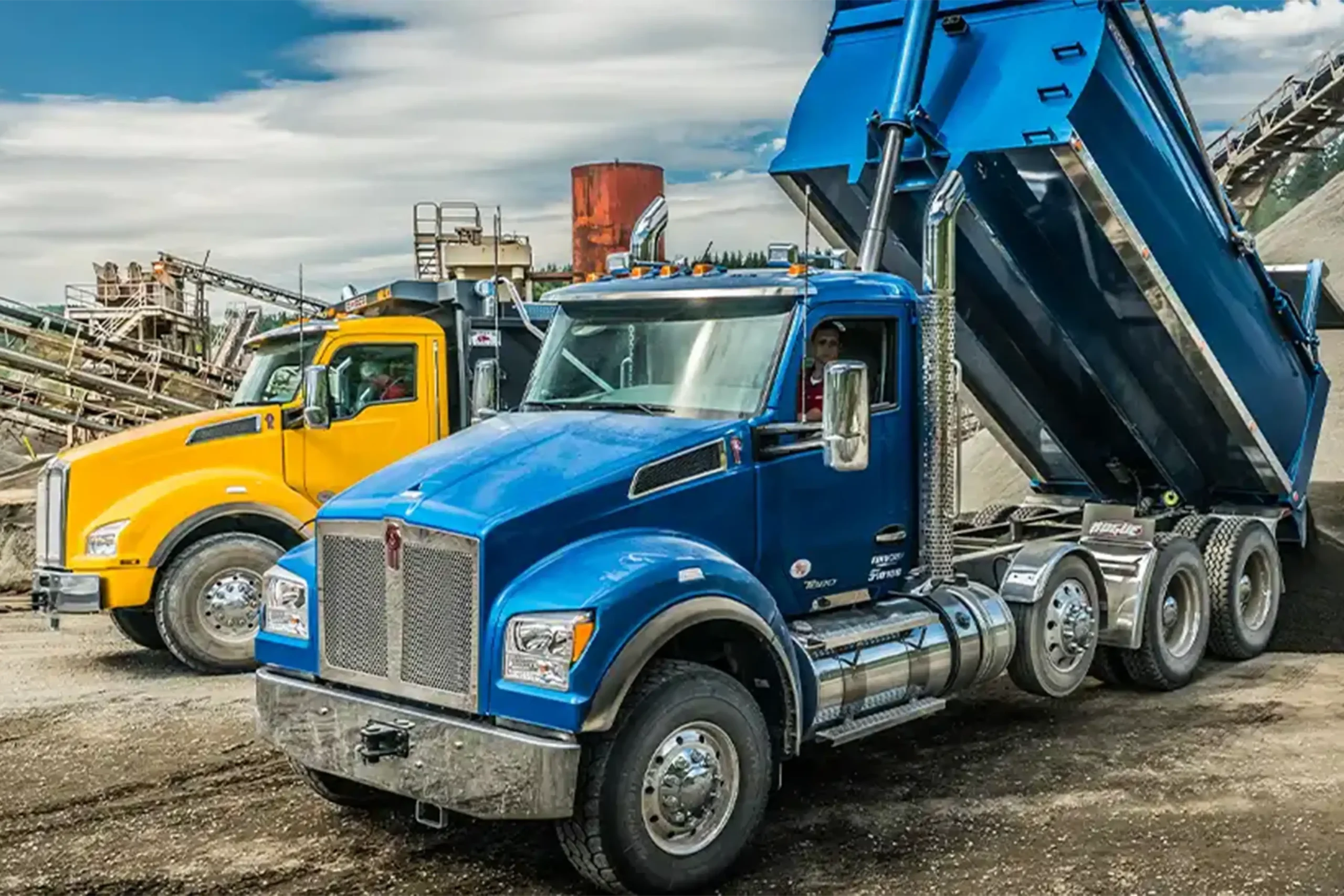It’s nearly impossible to explore the full impact of technology on the trucking industry in one article. Innovative new solutions are constantly emerging, and their total impact on the industry has yet to be revealed.
Many solutions are already becoming common among trucking companies both small and large. In this post, we explore advanced technology in trucking and how it’s changed the industry’s approach to costs, efficiency, sustainability, and more.
1. Predictive Maintenance
Preventive maintenance is the current gold standard for reducing risk and preventing small issues from escalating into costly repairs or dangerous breakdowns. But with the rise of AI and the Internet of Things (IoT), best practices are likely to change.
Predictive maintenance relies on a series of interconnected sensors and tracking devices known as the IoT to collect information about how your truck’s inner systems are running in real time. AI algorithms analyze the incoming data to identify trends and patterns in vehicle function, which can help you spot issues in real time and address them before the next scheduled maintenance interval.
This truly proactive approach to maintenance enables your company to save valuable time and money on repairs and replacements, so you can maximize uptime and minimize vehicle-related delays.
2. Fuel Efficiency Technologies
Maintaining a high fuel efficiency is essential for adhering to new emissions regulations and keeping costs low. While fuel costs have been trending downward as a whole, prices can change rapidly — and implementing technologies to help reduce the number of refills a truck needs is a must for achieving a high profit.
Examples of new and emerging fuel efficiency tech include:
- Predictive maintenance platforms: Internet-connected sensors and software help you monitor your fleet’s health, so you can ensure all vehicles are operating in peak condition when they are on the road.
- Route optimization tools: Using satellite positioning and AI integrations, drivers and fleet managers can easily identify the most efficient routes for each trip. You can also use free navigation apps like Trucker Path and CoPilot GPS to help you avoid obstacles like traffic jams, nearby accidents, and inclement weather in real time.
- Improved aerodynamics: Aerodynamic design reduces the amount of drag the vehicle must resist during travel, which means your engine doesn’t have to work as hard to keep the truck moving. Adding aerodynamic upgrades like side skirts can significantly help reduce fuel consumption.
3. Fleet Optimization Tools
Fleet management can be a challenging task with many responsibilities to take care of at once. That’s where digital fleet optimization comes in — these tools can simplify fleet management tasks like inspections, compliance, and more.
Telemetry, also known as telematics, is an excellent example. This new technology uses internet-connected sensors to track and transmit data in real time over mobile or satellite networks, which is possible thanks to the IoT.

Some of the most significant benefits of using these tools include:
- Increased driver satisfaction: Optimizing fleet management can help improve the driving experience by eliminating some of the common frustrations drivers have, such as inefficient routes and vehicle breakdowns.
- Improved maintenance: Proactive telemetry and predictive maintenance systems enable you to prevent vehicles from becoming overdue for preventive maintenance, significantly reducing driver risk and keeping maintenance costs low.
- Streamlined compliance management: IoT-connected tools can automate many compliance management tasks, such as logging driving hours and ensuring compliance with mandated rest breaks and driving limits. Some systems can also notify drivers about upcoming inspections to ensure trucks are always safe to be on the roads.
4. AI Logistics Enhancements
If you’ve been paying any attention to the news over the past few years, you’ll have heard of AI. It has rapidly become part of many technologies across various industries, including trucking and logistics.
AI uses advanced algorithms to rapidly process and analyze large datasets, allowing it to identify trends and deliver important insights much faster than a human data analyst ever could. In logistics and route planning, this capability enables companies to gain greater visibility into transportation processes, such as:
- Load optimization: AI can automatically assign loads to the most compatible vehicles, which can help improve fuel efficiency and reduce the number of empty miles a vehicle will travel.
- Load tracking: Integrations with the IoT enable companies to track where loads are in real time. As a result, they can predict more accurate deliveries and keep customers up to date on delays.
- Dispatcher automation: While AI will never truly replace human dispatchers, it can make their jobs significantly easier by automating time-consuming responsibilities such as route planning and load optimization.
Top 3 Future Trends in Trucking Technology
Technology moves fast, and trucking technologies are just one example. Here are the top three trucking tech upgrades we can look forward to in the coming years:
1. Blockchain Integrations
Blockchain is a secure digital ledger that records transactions across a computer network rather than on one device. This distributed system provides complete transparency and enables anyone with the proper authorization to update the ledger.
One of the biggest potential benefits of using blockchain in trucking and logistics is security. You can’t delete or edit anything on the blockchain after it’s been published, which significantly reduces the risk of fraud or record loss and ensures you have accurate transaction information at your fingertips.
2. Last-Mile Solutions
When items in your shipment require delivery to residential addresses, your company needs a way to get them there without relying on your truck. Innovative last-mile solutions enable your company to complete the delivery after you drop them off at the warehouse or distribution center.
For example, dense urban environments have long posed challenges to last-mile delivery due to parking limitations, tight spaces, and traffic congestion. Advances in AI and the IoT may help solve these issues by monitoring and managing space usage in real time to reduce congestion and ensure more on-time deliveries.
3. Transportation Management Systems
Transportation management systems (TMS) assist in logistics and supply chain management processes for various modes of transportation, including air, land, and sea. Some of the most significant benefits of AI-enhanced TMS include:
- Greater efficiency: AI enhancements help teams save valuable time and meet deadlines by automating repetitive and time-consuming tasks like freight billing and trade compliance documentation.
- Cost savings: Features like automated carrier rate comparison and booking help companies determine the most cost-effective shipping method for every load. They can also track loads in real time to ensure a safe, timely delivery.
- Freight management: User-friendly interfaces enable users to manage various stages of the quote-to-contract process from one unified location.

Prepare Your Trucking Company for the Future with Inland
Keeping up with trends in the trucking and logistics industries is essential for staying competitive in your service area. Advanced technologies enhance the transportation services you already provide, leading to more on-time deliveries, greater fuel efficiency, and more.
At Inland, we sell only the latest and greatest in fuel-efficient truck models and parts. With over 70 years of experience in the industry, our team can help you find the right match for your business and goals.
Take advantage of the latest in trucking tech with Inland. Contact your nearest dealership today.




